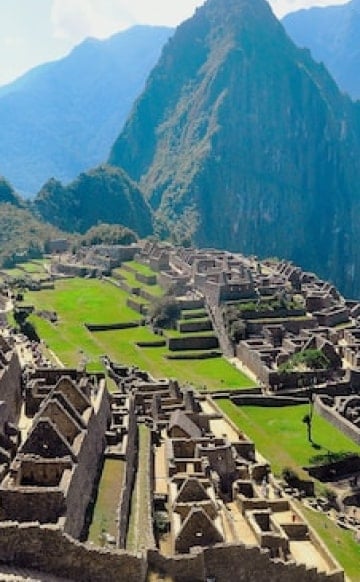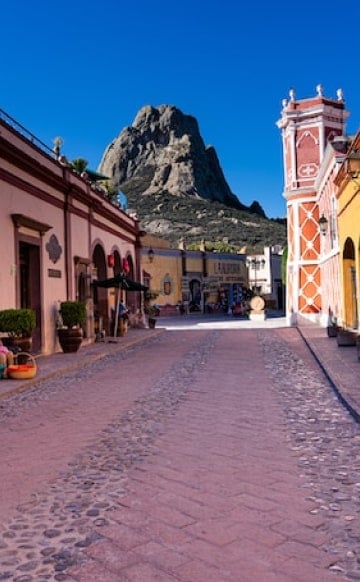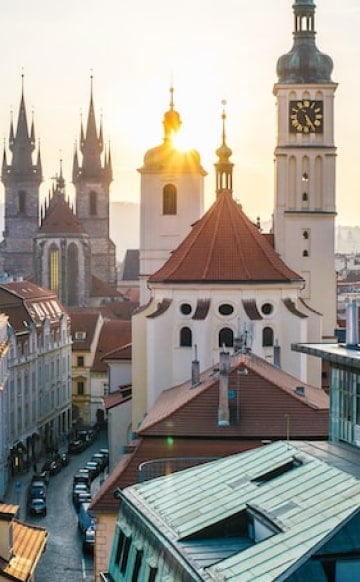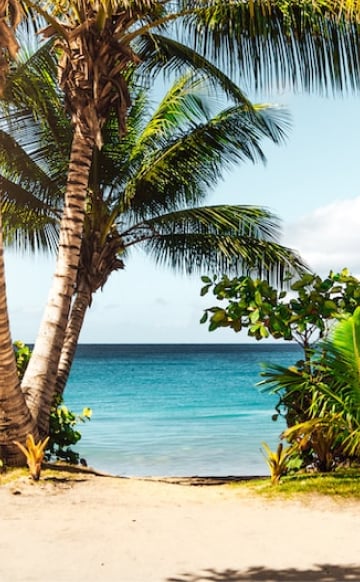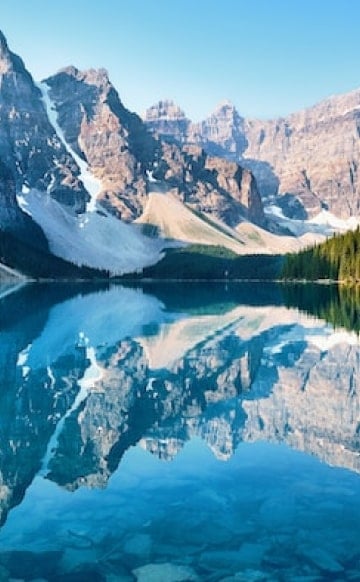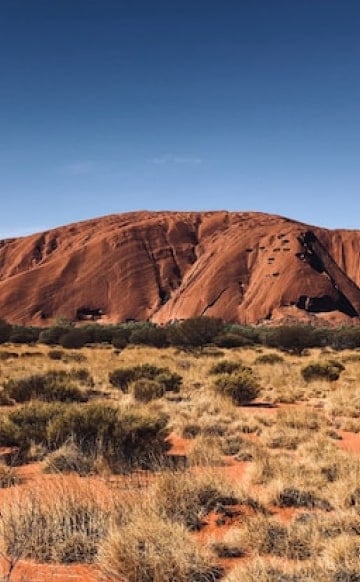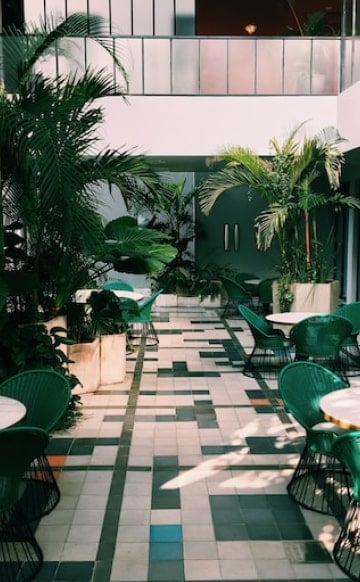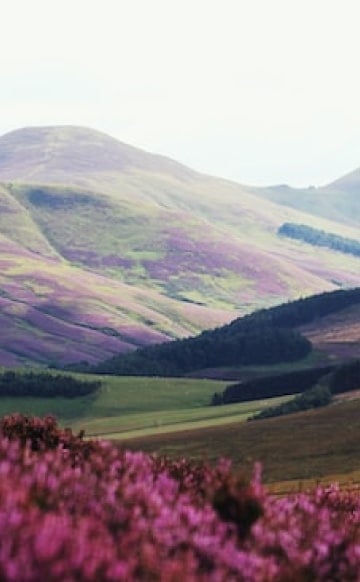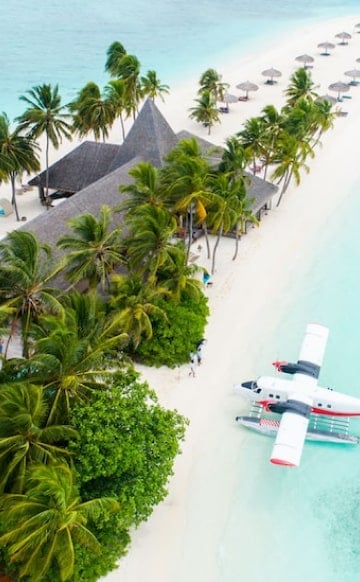This lush, volcanic archipelago may be a bit out of the way, but its off-the-beaten-path location is what makes it stand out from the rest. Here you can enjoy the timeless, tranquil beauty, driving along empty roads fringed with millions of azaleas and hydrangeas, and, everything from some of the best whale watching on the planet to spectacular hikes, fantastic cuisine and more.

Follow Scenic Trails
The Azores are home to some of the most scenic hiking trails you’ll find anywhere in the world. Sao Miguel Island is a true hiker’s paradise, filled with lagoons, volcano craters, streams and waterfalls that are only accessible on foot. It’s also home to an amazing bucket list hike: the Praia-Lagoa do Fogo trail, an 8-mile trek that provides amazing views of Vila Franca do Campo and Ribeira da Praia along the way to its culmination on the banks of Lagoa do Fogo. Also known as the “Lake of Fire,” this lake sits in the center of the island within the Agua de Pau stratovolcano. If you’ve worked up a sweat, you can even jump into the waters for a refreshing dip. And, that’s just one of the more than 20 official trails on Sao Miguel.

Visit Pico Island Wine Country
While the Azores aren’t exactly a place you’d expect to find a thriving wine culture, Pico Island is actually a destination that’s been producing wine since the 15th century – about a decade after the first settlers came around 1439. Despite volcanic eruptions, lava landslides and a hostile environment, the early settlers were able to not only adapt but thrive. While it doesn’t have the type of vineyards you might think, because it’s a volcanic island, vintners adapted to the basalt-littered landscape. The stone homes and stone-walled vineyards that were built to protect the 2,439 acres of vineyards from fierce Atlantic winds and surges of salty ocean water from centuries ago can still be seen today in the UNESCO World Heritage-listed Criação Velha wine region, in the municipality of Madalena.

Explore Underground Caves
As the Azores are volcanic islands, they’re also home to some incredible underground caves in addition to the out-of-this-world scenery found above ground. The adventurous shouldn’t miss exploring the wonders of the Azores underground world. The Algar do Carvao is Terceira Island’s most popular geological attraction, created from an eruption that occurred some 2,000 years ago. This volcanic cavern is made up of many grottos that feature beautiful stalactites and stalagmites. The entrance into the cave’s interior is made by taking steps that descend in a former chimney of an extinct volcano which leads to an underground lake filled by rainwater. Other options include canyoning on Flores or San Miguel, descending into the islands’ slippery, wet chasms through waterfalls and pools.

Get Up-Close to Marine Life on a Diving Excursion
The waters that surround the Azores are a diver’s paradise, filled with all sorts of fish species and amazing rock formations. Terceira offers the opportunity to see the graveyard of ancient ship anchors, eagle rays and octopus. There are more than 100 diving spots with over 3,000 marine species, vertical walls, high visibility, clean waters and incredible encounters with manta rays, mobulas and even whale sharks. With temperatures never lower than 60 degrees Fahrenheit, you can dive the Azores any time of the year, although there are some excellent offshore dive sites only accessible during the summer. In these spots, you’re virtually guaranteed manta ray and blue shark sightings as well as the occasional makos, whale shark and hammerhead.

Sign up for Whale Watching
Many different types of dolphin and whale species choose the Azores either as their permanent home or as part of their migration route. One-third of all marine mammals known have been recorded here, including blue whales, sperm whales, baleen whales, fin whales, Sei whales and humpbacks. In fact, the chances of seeing either dolphins or whales are said to be around 98 percent. The islands are internationally renowned as a place to watch cetaceans in their natural habitat, and once you have, you’ll never want to see them in an aquarium or marine park again. The best way to spot these majestic creatures is by boat, and if you’ve always wanted to swim with wild dolphins, guided tours are available in Sao Miguel.

Enjoy Birdwatching
The Azores are not only famous for their marine life, with more than 300 endemic and migratory species, like the Azores bullfinch, grey wagtail, storm petrel and roseate terns, but this region of the world is also very popular with birdwatchers. In fact, the Azores bullfinch, found on Sao Miguel, is one of the rarest bird species in Europe. It’s so rare that it can only be found on this island and just a small part of the island at that.

Visit Ponta Delgada
Ponta Delgada is the largest city in the Azores archipelago, located on Sao Miguel. It’s a fabulous place to visit with its white-washed houses, cobbled streets, 17th and 18th-century convents and churches, as well as its long, picturesque coastal promenade that’s ideal for an evening seaside stroll. What started out as a humble fishing community became a busy port and supply station for ships en route from the Mediterranean, Portugal and Africa heading to the Americas and the West Indies. Today, Ponta Delgada it gives visitors a glimpse of what life on the islands might have been like in the 16th century.

Browse Fascinating Museums
The Azores are also home to a number of interesting museums. You can learn quite a bit about the history of whaling in several museums on Ilha do Pico, at Sao Roque or Lajes do Pico. If you’re into archaeology, don’t miss the Angra do Heroismo Museum on Terceira Island, which offers an outstanding artifact collection within a former Franciscan convent. Besides the museum, the monastery also houses the church of St. Francis, known as the Church of Our Lady of Guia, a beautiful example of 18th-century religious architecture. On the Island of Faial, the Horta Regional Museum housed in the old Jesuitical College integrates several collections related to Faial history, particularly the collection of ethnographical works in fig tree kernel (made by a local Faial-born artist) and pieces of other Portuguese artists, such as António Dacosta, Sousa Pinto and Vieira Lusitano.

Picnic at Caldeira Velha
Caldeira Velha on Sao Miguel is a little place that you can easily stop at on your way to Lagoa do Fogo by driving down the mountain that heads toward Ribeira Grande, a city that’s also well worth visiting with a number of popular attractions, including a liqueur factory. At Caldeira Velha, you’ll walk down the pathway lined with beautiful flowers and plants through the trees which leads to a waterfall and a warm pool of water beneath. This is an ideal spot for a picnic, and you can even dive into the magical waters of the pool for an incredibly refreshing dip.

Bike in a Volcanic Crater
Cycling on Sao Miguel is one of the best ways to explore the island. There are guided tours as well as self-guided tours that offer the chance to ride in a volcanic crater, take in breathtakingly lush scenery and learn about the fauna, flora and history of the Azores’ formation. You’ll have amazing views over the picture-postcard Sete Cidades twin lakes and the coastline as you pedal through the rim of extinct volcano craters. At the end of the journey, you can enjoy a swim in a magnificent pool by the sea heated by an underground volcanic crack at Ponta da Ferraria. The waters are an incredibly soothing 82 degrees at low tide.

Take in Views from the Summit of Mount Pico
If you’re up for a challenge, climbing to the top of Mount Pico is worth the reward for the stunning panoramic views at over 7,700 feet above sea level. One of the highest Atlantic mountains, it’s the tallest in Portugal and twice the elevation of any other peak in the Azores. You can head up on your own or join an organized hike – just be sure to take the main trail, the only route with signs all the way to the top located near Madalena village. The steep, nearly three-mile trek takes about three hours. In addition to magnificent vistas, you’ll see lava tubes and fascinating rock formations too.

Go Horseback Riding
If you love horses, the Azores are truly a horse riding haven as an archipelago home to many well-trained Lusitano and Cruzado Portuguese horses. Gallop through the awe-inspiring landscapes while taking in views over the Atlantic paired with incredible flowering gardens and lush green pastures through a variety of short and multi-day long trails. More than a sport, horse riding is a tradition here. There are records from the 16th century that mention horses in property inventories, some dating back to the first settlers. You’ll find half-day, full-day and multi-day trips available through a number of different outfitters that will allow you to explore the diversity of the islands and its many hidden, exotic spots.

Try Paragliding
If you like heart-pounding thrills, paragliding on Sao Miguel has become extremely popular, particularly the opportunity to fly over the volcanic craters of Furnas and Sete Cidades. While it’s possible to paraglide any time of the year, the summer months are best. Technical cross country flights not only allow you to soar over the volcanic craters and lakes of Fogo and Sete Cidades but picturesque beaches and rugged cliffs.

Take a Stroll Through Angra do Heroismo
This historic capital on Terceira Island is a UNESCO World Heritage Site and one of the three regional capitals in the Azores. Take a stroll around this important port town with its beautiful 17th-century buildings – it’s filled with great local shops, cafes and bars. When you’re ready to go, head to Alto da Memoria, a high point from which to admire the town from above with two twin church towers dating from the 16th century. More fabulous views over Anora Bay can be had atop Monte Brazil.

Sample the Hot Springs-Cooked Meat Stew
One of the best things about visiting the Azores is the local cuisine, and the meat stew is one you really can’t go without trying. When you’re on Sao Miguel, the first thing you should do is ask about the meat stew that’s cooked up in the hot springs of Furnas, one of its most characteristic dishes. The stew is baked slowly by the natural heat of the volcanic caldera. Also, look for the mouth-watering fish stew known as “caldeirada de peixe”.

